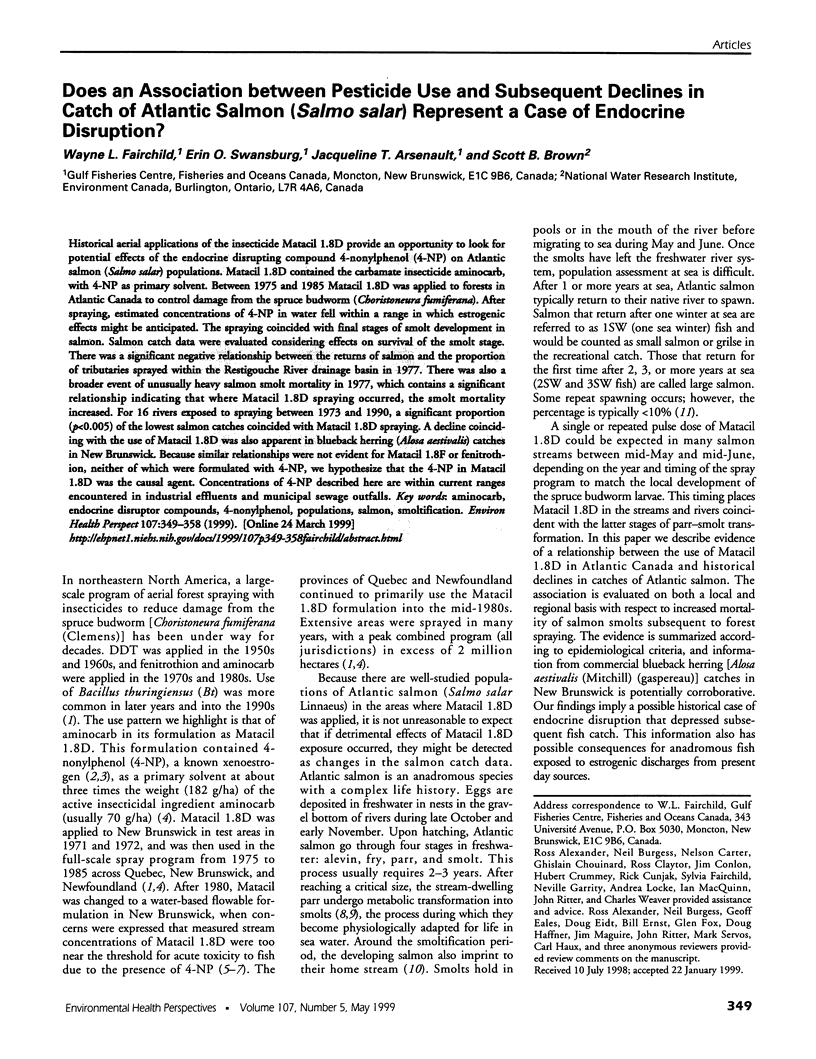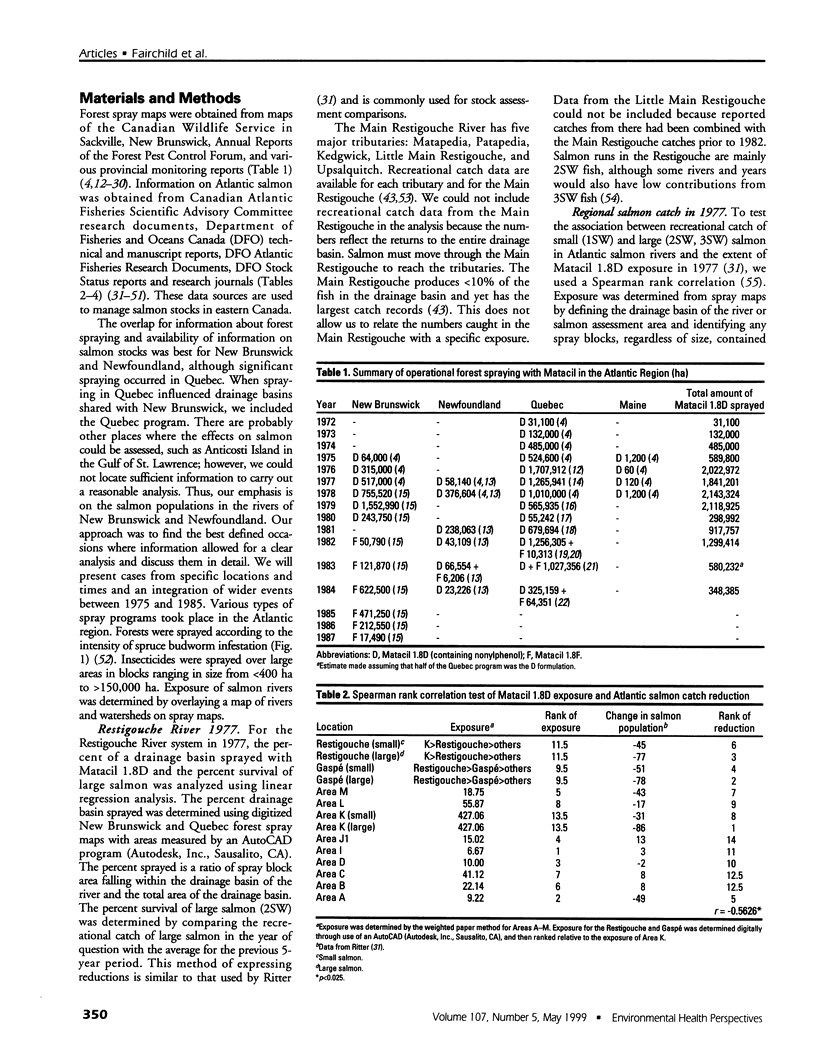Abstract
Historical aerial applications of the insecticide Matacil 1.8D provide an opportunity to look for potential effects of the endocrine disrupting compound 4-nonylphenol (4-NP) on Atlantic salmon (Salmo salar) populations. Matacil 1.8D contained the carbamate insecticide aminocarb, with 4-NP as primary solvent. Between 1975 and 1985 Matacil 1.8D was applied to forests in Atlantic Canada to control damage from the spruce budworm (Choristoneura fumiferana). After spraying, estimated concentrations of 4-NP in water fell within a range in which estrogenic effects might be anticipated. The spraying coincided with final stages of smolt development in salmon. Salmon catch data were evaluated considering effects on survival of the smolt stage. There was a significant negative relationship between the returns of salmon and the proportion of tributaries sprayed within the Restigouche River drainage basin in 1977. There was also a broader event of unusually heavy salmon smolt mortality in 1977, which contains a significant relationship indicating that where Matacil 1.8D spraying occurred, the smolt mortality increased. For 16 rivers exposed to spraying between 1973 and 1990, a significant proportion (p<0.005) of the lowest salmon catches coincided with Matacil 1.8D spraying. A decline coinciding with the use of Matacil 1.8D was also apparent in blueback herring (Alosa aestivalis) catches in New Brunswick. Because similar relationships were not evident for Matacil 1.8F or fenitrothion, neither of which were formulated with 4-NP, we hypothesize that the 4-NP in Matacil 1.8D was the causal agent. Concentrations of 4-NP described here are within current ranges encountered in industrial effluents and municipal sewage outfalls.
Full text
PDF








Images in this article
Selected References
These references are in PubMed. This may not be the complete list of references from this article.
- Fox G. A. Practical causal inference for ecoepidemiologists. J Toxicol Environ Health. 1991 Aug;33(4):359–373. doi: 10.1080/15287399109531535. [DOI] [PubMed] [Google Scholar]
- Gray K. M., Janssens P. A. Gonadal hormones inhibit the induction of metamorphosis by thyroid hormones in Xenopus laevis tadpoles in vivo, but not in vitro. Gen Comp Endocrinol. 1990 Feb;77(2):202–211. doi: 10.1016/0016-6480(90)90304-5. [DOI] [PubMed] [Google Scholar]
- Lewis S. K., Lech J. J. Uptake, disposition, and persistence of nonylphenol from water in rainbow trout (Oncorhynchus mykiss). Xenobiotica. 1996 Aug;26(8):813–819. doi: 10.3109/00498259609046751. [DOI] [PubMed] [Google Scholar]
- Madsen S. S., Korsgaard B. Opposite effects of 17 beta-estradiol and combined growth hormone-cortisol treatment on hypo-osmoregulatory performance in sea trout presmolts, Salmo trutta. Gen Comp Endocrinol. 1991 Aug;83(2):276–282. doi: 10.1016/0016-6480(91)90031-z. [DOI] [PubMed] [Google Scholar]
- Prunet P., Boeuf G., Bolton J. P., Young G. Smoltification and seawater adaptation in Atlantic salmon (Salmo salar): plasma prolactin, growth hormone, and thyroid hormones. Gen Comp Endocrinol. 1989 Jun;74(3):355–364. doi: 10.1016/s0016-6480(89)80031-0. [DOI] [PubMed] [Google Scholar]





